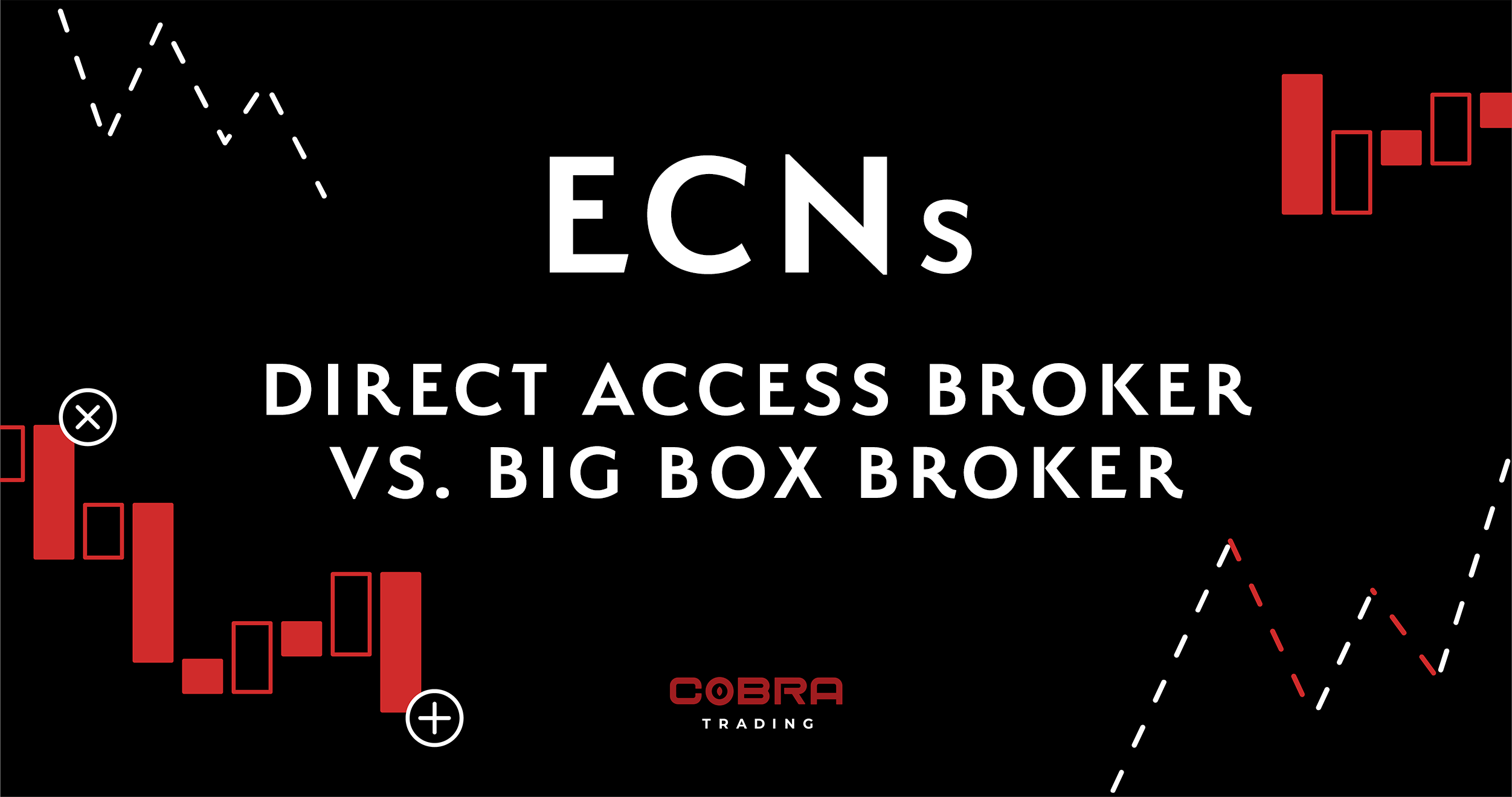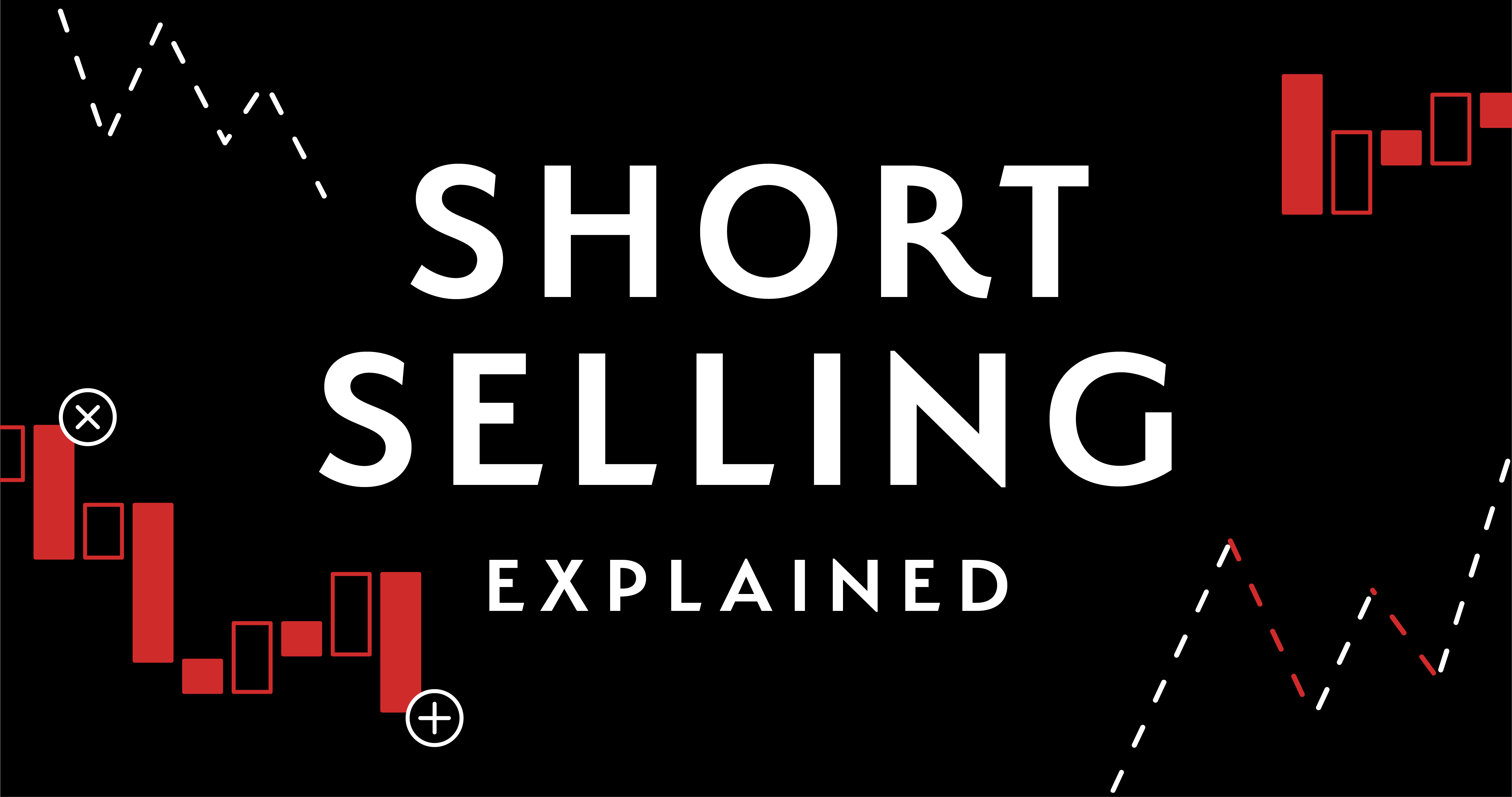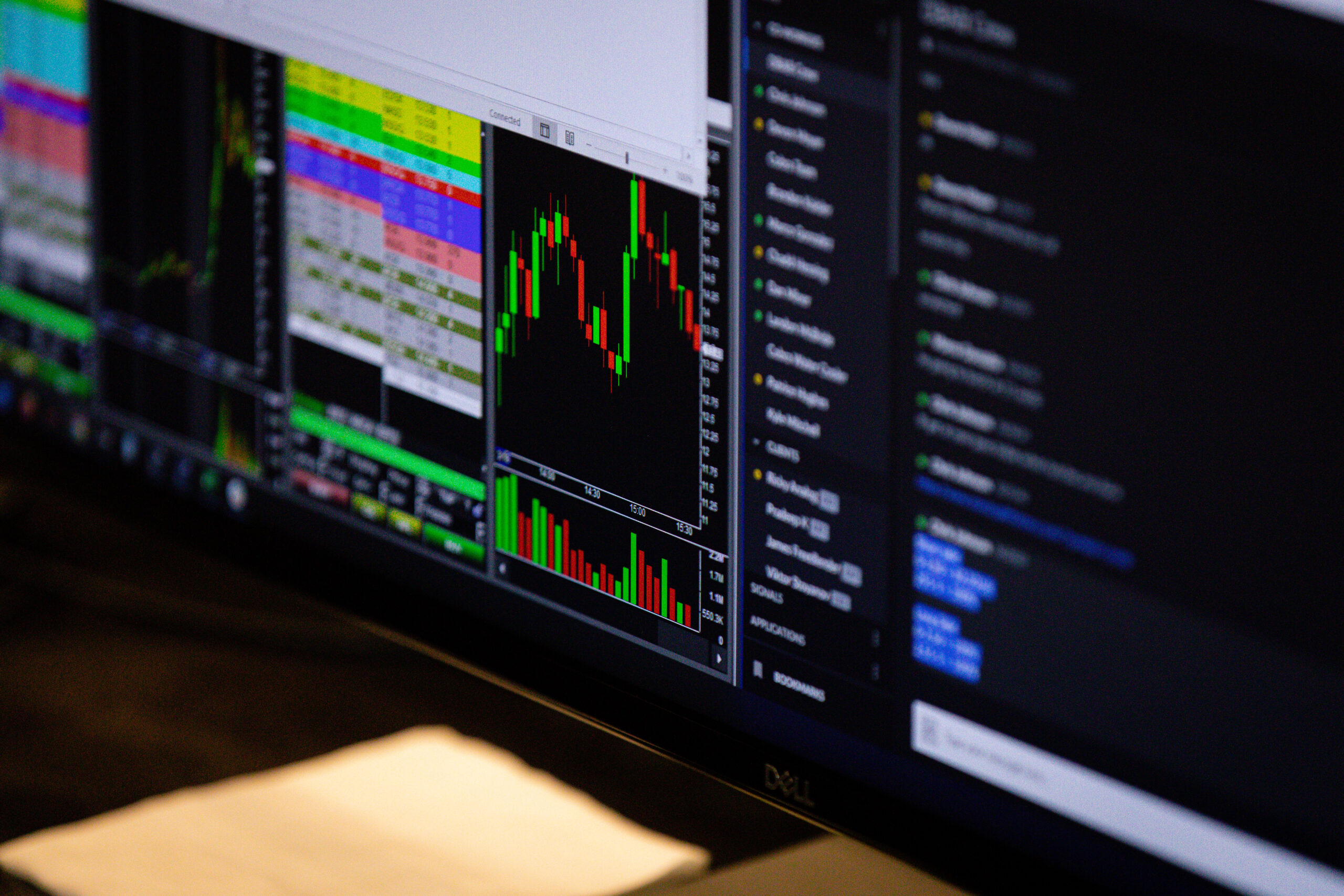Disclaimer: All information provided here is for educational purposes only and should not be taken as financial advice. Always do your own research or consult a professional before making any major investment decisions.
You might have heard traders throw around the term “ECN,” which stands for Electronic Communications Network. But what exactly does that mean? How does it differ from trading through a regular brokerage? And most importantly, how can these ECN fees (or potential ECN rebates) affect your bottom line?
If you’re a day trader, or even if you’re just dipping your toes into the fast-paced world of trading, understanding ECN fees can give you that extra edge—an edge that might spell the difference between walking away with a profit or barely breaking even.
Below, we’ll walk through the essentials of ECN fees, how they work, how they’re calculated, how they impact your profits, and how they differ from rebates or credits. We’ll also shed some light on direct access routes, like ARCA, which send your trades straight to the market. After you finish reading, you’ll have the knowledge you need to make more informed decisions on how you place your orders, choose your broker, and strategize your trading style.
What Are ECN Fees?
ECN (Electronic Communications Network) is a system that connects buyers and sellers (traders, in other words) directly with the stock market. Instead of routing your order through a “middleman,” such as a market maker or a larger brokerage’s internal order-handling system, an ECN allows you to place your trades directly on the market’s electronic order book.
Many day traders prefer ECN routes because they typically provide faster execution and more control over trades. When every second counts—as it often does for active traders—speed can be a game-changer.
But there’s a catch: ECN fees. When you trade through these networks, you may pay a fee for each share executed. Conversely, sometimes you may even receive a credit (a “rebate”) if you add liquidity to the market rather than taking it away. We’ll get into the specifics shortly, but here’s the quick snapshot:
- ECN Fees are charges for taking liquidity from the market (e.g., placing a market order that immediately matches with an existing order).
- ECN Rebates/Credits are rewards for adding liquidity to the market (e.g., placing a limit order that sits on the order book until someone else matches it).Scroll down to Direct Access Benefit to see an example of how ECN rebates work.
Why Do ECNs Charge Fees?
ECNs are electronic marketplaces that have their own operating costs. By charging fees, they maintain and provide sophisticated infrastructure to handle high volumes of trades at lightning speed.
The idea is to incentivize people to add liquidity (thus earning a rebate) so that there are enough buy and sell orders on the book to create a robust trading environment. At the same time, traders who are in a hurry and “take” that liquidity by placing market orders may be charged for doing so.
Pro tip: Think of an ECN like a fancy nightclub that wants to be packed with people. They might offer discounts or free entry (rebates) to those who show up early and keep the party going. But if you show up late and just cut in line (taking liquidity), you pay a cover charge (the fee).
How ECN Fees Work
To really understand how ECN fees work, it helps to contrast them with what many refer to as “big box brokers.” If you’ve used an app or a discount broker, you might have been impressed by “commission-free” trading. But that doesn’t necessarily mean your trades are executed instantly or at the best possible price—often, there’s a middleman like a market maker or an internal order-handling system involved.
The Middleman Delay
When you submit an order through certain brokers, the order can be routed to a market maker who decides if they can profit from it by capturing the bid/ask spread. If they can, they might execute your trade internally. If they can’t, your order might get grouped with others and sent out to the actual stock exchange. This process can introduce a delay—sometimes small, sometimes significant. And for day traders, every fraction of a second can count.
The Difference Between a Market Maker and ECNs
The difference between a Market Maker and an ECN lies in how they handle trade execution and order flow in the financial markets.
Market Maker
- A market maker is a firm or an individual that provides liquidity by continuously quoting bid (buy) and ask (sell) prices for a stock, option, future, or other financial instrument.
- They profit from the spread (the difference between the bid and ask price).
- Market makers often trade against their clients, meaning they take the other side of a trade.
- Some brokers that act as market makers may have a conflict of interest because they benefit when traders lose.
ECN (Electronic Communication Network)
- An ECN is an automated system that connects buyers and sellers directly without a middleman (the market maker).
- It aggregates quotes from multiple market participants, offering tighter spreads and more transparent pricing.
- ECN brokers do not trade against their clients; instead, they match orders with other traders or liquidity providers.
- They typically charge a commission instead of profiting from the bid-ask spread.
- Because ECNs rely on external liquidity, slippage and variable spreads can occur during volatile market conditions.
Key Differences
| Feature | Market Maker | ECN |
|---|---|---|
| Execution Model | Internalized (acts as counterparty) | Direct matching with liquidity providers |
| Spreads | Fixed or variable, includes markup | Variable, tighter spreads but commission-based |
| Conflict of Interest | Possible (trades against clients) | No conflict (pure intermediary) |
| Slippage | Possible in volatile conditions | Possible in volatile conditions |
| Trading Costs | Built into spread | Commission per trade |
Direct Access (ECN) Benefit
Unlike big box brokers who choose where to send your orders for you, if you use a direct access broker like Cobra Trading, the control of where you want your order to go remains in your hands. This is accomplished through a direct market access (DMA) platform like DAS Trader or Sterling Trader. Inside these platforms, you choose where your order goes. It’s placed on the order book, and if another trader’s order is there ready to match, you get an immediate fill. Alternatively, your order might sit there until someone else matches it.
Not all brokers are direct access brokers. Therefore, they are likely selling your orders to the highest bidding market maker who is then deciding if they want to take the opposite side of your trade to provide you the liquidity to execute your order or channeling them through their networks to the market for a fee and you are likely not getting the best executions that you could if you chose to use a direct access broker.
- If you “take liquidity” when you place an order, it means your order immediately matches existing orders on the order book. You might pay a fee for this.
- If you “add liquidity” when you place an order that doesn’t immediately match a bid or ask, it stays on the order book until the market price moves to it. In this case, you may receive a rebate, which in some cases can offset commissions.
Quick Example: Suppose you place a buy limit order for AAPL at $250.10, and the current bid is $250.15. If nobody sells to you at $250.10 right away, your order sits in the order book, effectively providing liquidity. When the market price of AAPL goes down and someone eventually decides to sell at $250.10, you’ll “get hit,” your order fills, and you might be charged a smaller fee or earn a small rebate, depending on the route you chose. If instead you buy with a market order when the ask is $250.15, you “take liquidity” and might pay an ECN fee.

How Direct Market Access (DMA) Platforms Like DAS Trader Connect to ECNs & Exchanges
Platforms like DAS Trader, Sterling Trader, and other Direct Market Access (DMA) platforms allow traders to choose their execution venue, meaning they can route orders directly to specific stock exchanges, ECNs, or market makers. Here’s how this connects to ECNs and the broader market:
1. Trader Places a Buy Order on a DMA Platform
The trader selects an execution venue, which could be:
- A specific stock exchange (e.g., NYSE, NASDAQ).
- An ECN (e.g., ARCA, EDGX, INET).
The order is then sent directly to the chosen destination without broker intervention (unlike retail brokers who automatically decide where to send it).
2. If the Trader Selects an ECN for Execution
If the trader routes their order to an ECN (e.g., ARCA, EDGX, INET), the following happens:
- The ECN adds the order to its order book, making it visible to other traders.
- The ECN matches the order with existing sell orders at the best price.
- If a match exists → The trade is executed instantly.
- If no match exists → The order stays on the ECN’s order book until filled OR is routed to another exchange for liquidity.
- Order execution is confirmed and the shares are delivered.
Key Benefit:
- ECNs allow price improvement because they match orders with the best bid/ask available from real market participants.
- Some ECNs provide rebates to traders who add liquidity.
3. If the Trader Selects a Stock Exchange for Execution
If the trader chooses a stock exchange (e.g., NASDAQ, NYSE):
- The order is sent to the exchange’s central limit order book (CLOB).
- The exchange attempts to match the order with an existing seller at the best price.
- If a match exists → The trade executes immediately.
- If no match exists → The exchange may then route the order to an ECN or another liquidity provider.
- Trade execution is confirmed and shares are delivered.
Key Benefit:
- Choosing a specific exchange reduces execution uncertainty, but traders must be aware of fees and liquidity.
4. What Happens When There’s No Immediate Match?
If the chosen execution venue cannot immediately match the order, the following may happen:
- Stock Exchange → ECN: The exchange sends the order to an ECN for more liquidity.
- ECN → Exchange: The ECN sends the order to a stock exchange if there’s no matching sell order on its own book.
- Order Remains Open: If neither the ECN nor exchange finds a match, the order stays open until filled.
How ECN Fees Are Calculated
ECN fees can seem daunting because there’s no single, universal formula used by all brokers and all ECNs. Instead, each ECN (ARCA, NASDAQ, BATS, EDGX, etc.) sets its own fee and rebate structure. Each direct access broker then incorporates these structures into their commission schedules.
If you want a list of routes and their corresponding fees, just ask our help desk.
Per-Share Fee Model
Typically, ECN fees are quoted on a per-share basis. For example, an ECN might charge a fee of $0.003 per share to “take liquidity,” and might offer a rebate of $0.002 per share to “add liquidity.”
The exact numbers vary across different ECNs and can also depend on your trading volume.
High-volume traders often qualify for reduced fees or higher rebates, because they bring so much order flow to the network.
Illustration: If you bought 1,000 shares and the ECN “take” fee is $0.003 per share, your total ECN fee would be 1,000 x $0.003 = $3.00.
Volume Tiers
Many ECNs and brokers use volume tiers to incentivize traders to route more orders (liquidity) through their network. Here’s a simplified example:
- Tier 1 (0 – 300k shares per month):
- Taking liquidity: $0.003 per share fee
- Adding liquidity: $0.002 per share rebate
- Tier 2 (300k – 1M shares per month):
- Taking liquidity: $0.0025 per share fee
- Adding liquidity: $0.0022 per share rebate
- Tier 3 (1M+ shares per month):
- Taking liquidity: $0.002 per share fee
- Adding liquidity: $0.0025 per share rebate
In this fictional scenario, if you’re a smaller trader doing under 300,000 shares per month, you’ll likely see higher fees and smaller rebates. Larger traders enjoy better pricing. This tiered structure can make a big difference in your overall profitability if you’re trading significant volume.
Broker-Specific Surcharges or Pass-Throughs
Some brokers pass these fees and rebates directly to you. Others might add a small surcharge (or keep a portion of your rebate) to cover costs. It’s always a good idea to check your broker’s fee schedule and ask questions if something isn’t clear.
Pro Tip: Keep an eye on your total cost per trade, including both commission and ECN fees (or rebates). That’s what really matters when you crunch the numbers.
How ECN Fees Affect Trading Profits
Now we get to the heart of the matter: How do ECN fees (and rebates) affect the money you make?
1. Direct Impact on Your Cost Basis
Whenever you pay a fee to complete a trade, that cost eats into your profit (or adds to your loss). Conversely, receiving a rebate can slightly offset your commissions or even help you turn a small losing trade into a breakeven or profitable one. For day traders placing many trades a day, these small fees and rebates can add up quickly—positively or negatively.
- Taking liquidity fees add cost on top of your broker’s commission.
- Adding liquidity rebates reduce that cost or, in some cases, pay you more than your broker’s commission costs.
Imagine you’re trading a high-volume stock with very tight spreads. You want to scalp for pennies on each share. The difference between paying a $0.003 per-share “take” fee and getting a $0.002 per-share rebate could be the difference between success and failure at the end of the month.
Example:
- Trade A: You buy 1,000 shares using a market order (taking liquidity), and pay $0.003/share in ECN fees = $3 total. You sell the shares the same way, incurring another $3. That’s $6 on top of your brokerage’s commissions. If you made $50 profit on the trade, you’re now at $44 net profit after ECN fees.
- Trade B: You buy 1,000 shares using a limit order that gets filled by someone else (adding liquidity), so you earn $0.002/share in a rebate = $2. Then you sell the shares the same way, earning another $2. You just netted $4 in rebates. If you made $50 on the trade (before fees/rebates), you’re at $54 total because of your extra $4 rebate.
That’s a $10 swing in net profit across the two trades! Over thousands of trades, that can become monumental.
2. Liquidity Strategy
One of the reasons that many professional traders use direct access brokers and take advantage of different ECNs is because they strategically decide when to add and when to take liquidity based on market conditions:
- Add liquidity if you think there’s enough time and your limit order will likely get filled without missing the move. You gain a small rebate and possibly get a better entry or exit price.
- Take liquidity if you believe speed is critical and you’d rather secure the fill immediately than wait for the market to come to you. It might cost you a fee, but it could save you from a worse fill or missing out on a big move altogether.
3. Slippage vs. ECN Fees
Don’t forget about slippage—the difference between the expected price of a trade and the actual fill price. If you place a limit order to save on fees, but the stock moves away and never fills, you might miss out on a big profit. Or if you place a market order and get filled worse than you expected, you might lose more than you would have saved with a rebate.
ECN fees are just one piece of the puzzle. Balancing the possibility of slippage against paying or receiving a fee is part of the art of active trading.
Difference Between ECN Fees and Credits
So, we keep talking about how you pay a fee when you take liquidity and potentially get a rebate (or credit) when you add liquidity. Let’s spell it out clearly:
- ECN Fees: This is money you pay (on a per-share basis) to the ECN for executing a trade that instantly hits someone else’s existing order on the order book.
- ECN Credits / Rebates: This is money you receive (on a per-share basis) from the ECN for placing an order that adds liquidity to the market, which is later taken by another trader.
The Importance of “Netting”
In many cases, your monthly statement from the broker will show the net of all your ECN fees and credits. If you mostly added liquidity, you might even end up with a positive net credit that offsets your commission costs. On the other hand, if you mostly took liquidity, you might have a net ECN fee that increases your overall trading expenses.
A Quick Story:
- Let’s say you trade actively throughout the month. You buy and sell 200,000 shares in total. You do 100,000 shares as limit orders (adding liquidity) at a $0.0015/share rebate = $150 in credits. The other 100,000 shares are executed via market orders (taking liquidity) at a $0.0025/share fee = $250 in fees.
- If you net those out, you owe $100 in ECN fees for the month.
- Meanwhile, your commissions are $400. So your total trading cost is $500. However, if you had used different strategies to add more liquidity, you might have cut that cost in half or more.
Moral of the story: The mix of adding and taking liquidity can substantially impact your net costs.
Bringing It All Together
Now that we’ve discussed what ECN fees are, how they work, how they’re calculated, how they can affect your trading profits, and how they differ from credits/rebates, let’s circle back to how you can use this information.
- Choose the Right BrokerIf ECN routes and direct access matter to you, Cobra Trading is perfect for traders who trade any amount of volume. During your research, be sure to compare brokers fee schedules. Some brokers cater specifically to active traders and pass along better rates or have more flexible routing options.
- Understand Your Trading StyleIf you’re scalping for very small gains, you’ll want to pay close attention to whether you can handle paying “take” fees. Could you place more limit orders and capture rebates? Are you missing out on trades by always waiting to add liquidity?
- Keep Track of Your CostsIt’s easy to get tunnel vision focusing on the raw profit/loss of a trade. But it’s equally important to track your real net after fees. Make an Excel spreadsheet, or use your broker’s trade reports, to see how much you pay in ECN fees (and how much you receive in rebates).
- Be FlexibleMarkets change. Stocks become more or less liquid. Your strategies should also adapt. Maybe it makes sense to add liquidity when the market is calm, but if there’s a major news release and you must get in or out immediately, paying a take fee might be well worth avoiding slippage.






